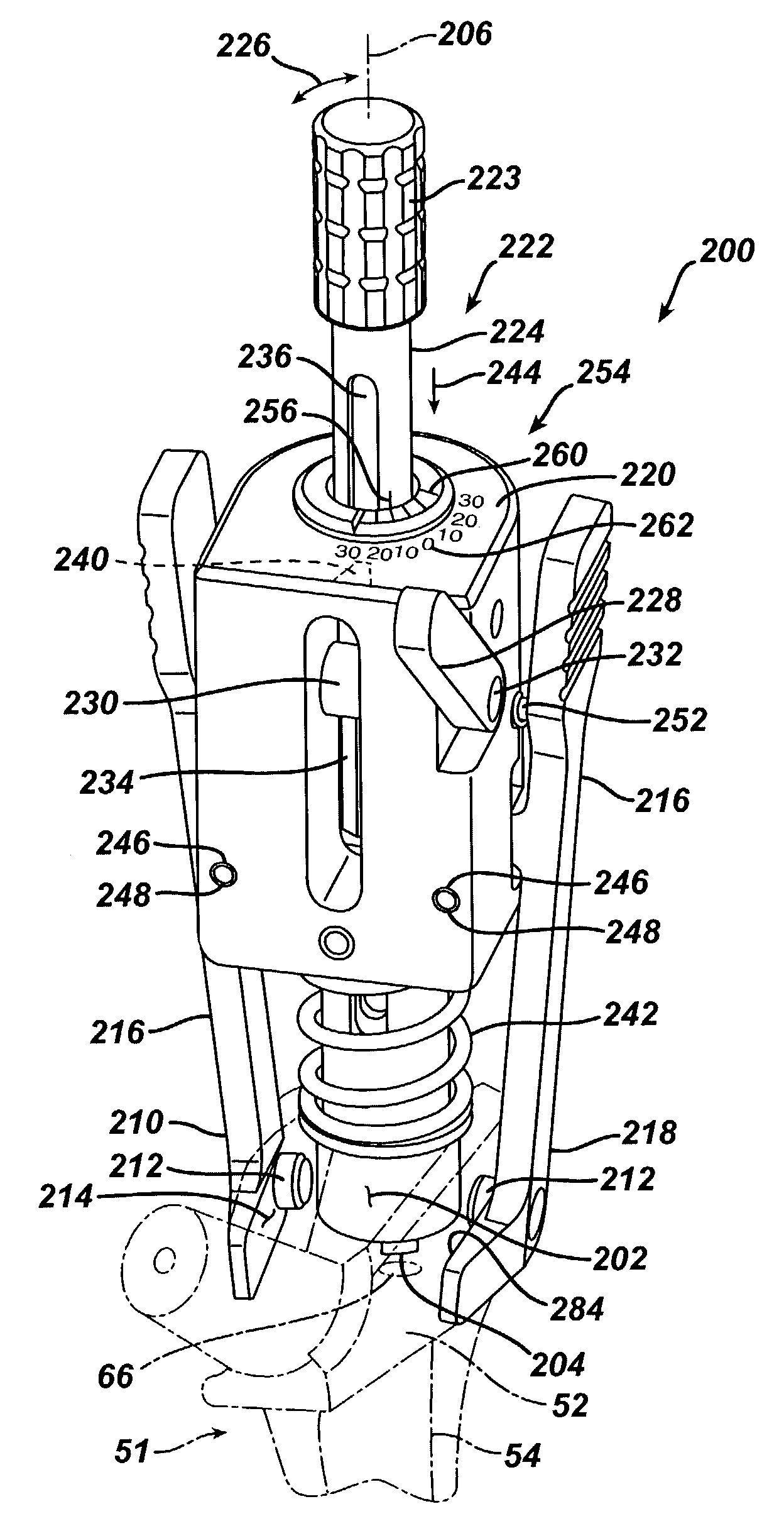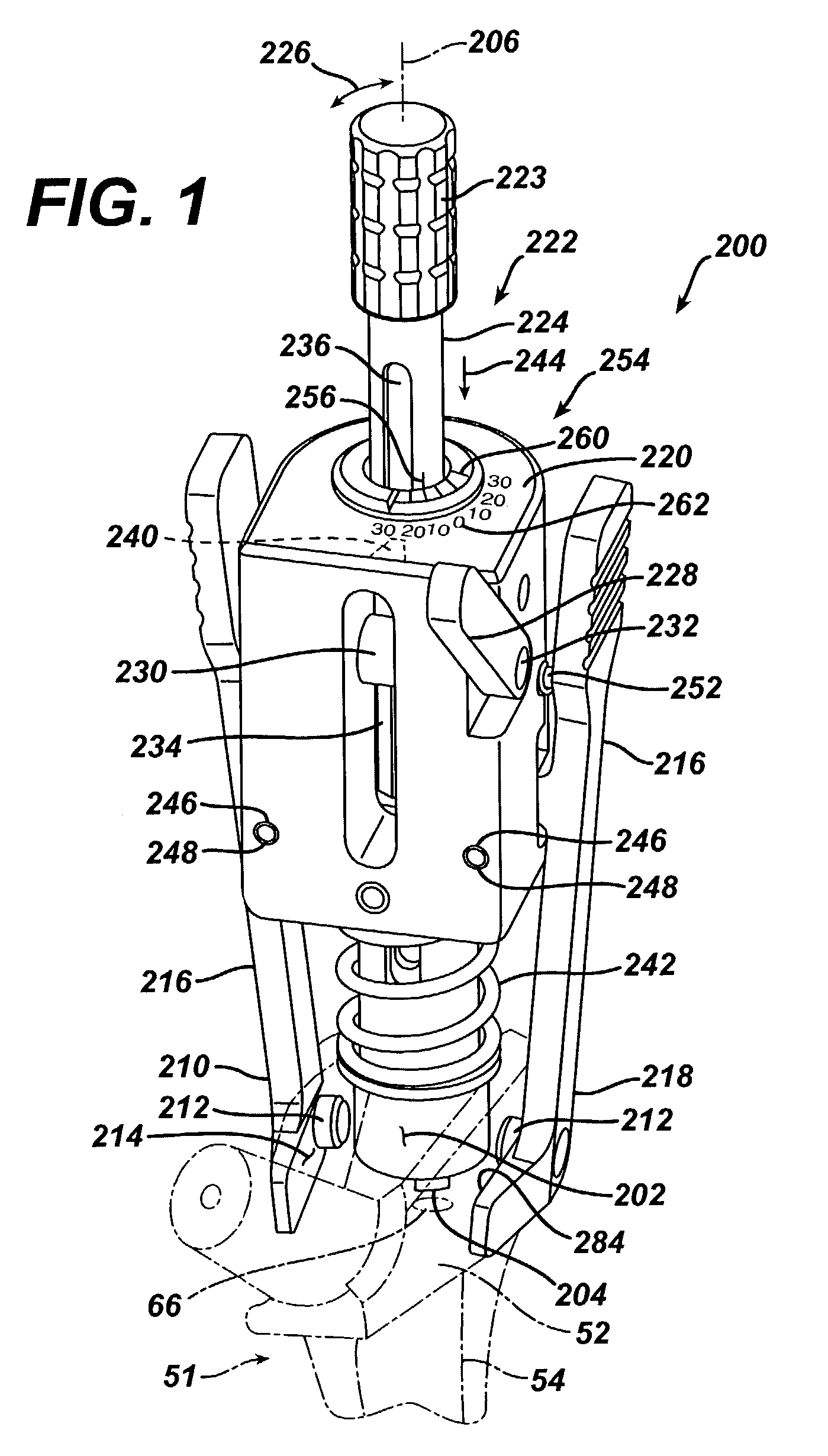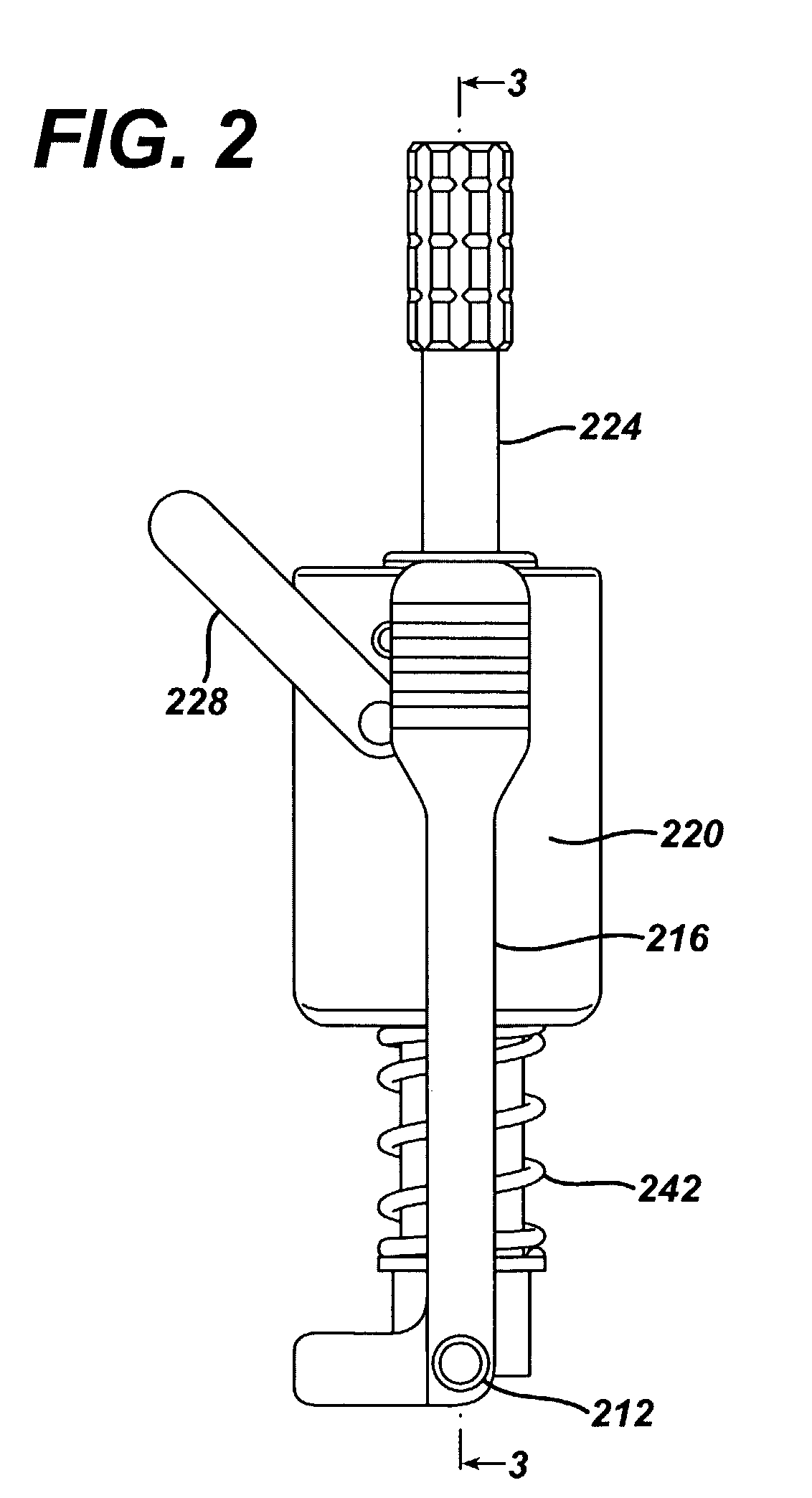Alignment device for modular implants and method
a modular, implant technology, applied in the field of orthopaedics, can solve the problems of inability to stabilize the joint, difficult to combine all these biomechanic options, and particularly difficult to disloca
- Summary
- Abstract
- Description
- Claims
- Application Information
AI Technical Summary
Benefits of technology
Problems solved by technology
Method used
Image
Examples
Embodiment Construction
[0061]Embodiments of the present invention and the advantages thereof are best understood by referring to the following descriptions and drawings, wherein like numerals are used for like and corresponding parts of the drawings.
[0062]Referring now to FIGS. 16 and 19, a hip stem 10 is shown. The hip stem 10 is suitable for use with the alignment instrument of the present invention. The hip stem 10 may be made of any suitable durable material which is compatible with the human body. For example, the hip stem 10 may be made of a titanium alloy, a cobalt chromium alloy, or a stainless steel alloy. As shown in FIGS. 16 through 19, the hip stem 10 includes a proximal body 12 and a bowed distal stem 14.
[0063]Referring now to FIG. 18, the proximal body 12 may be secured to the distal stem 14 in any suitable fashion. For example and as shown in FIG. 18, the proximal body 12 may be secured to the distal stem 14 by means of threads 15 located on the proximal portion of the proximal body 12 whic...
PUM
 Login to View More
Login to View More Abstract
Description
Claims
Application Information
 Login to View More
Login to View More - R&D
- Intellectual Property
- Life Sciences
- Materials
- Tech Scout
- Unparalleled Data Quality
- Higher Quality Content
- 60% Fewer Hallucinations
Browse by: Latest US Patents, China's latest patents, Technical Efficacy Thesaurus, Application Domain, Technology Topic, Popular Technical Reports.
© 2025 PatSnap. All rights reserved.Legal|Privacy policy|Modern Slavery Act Transparency Statement|Sitemap|About US| Contact US: help@patsnap.com



